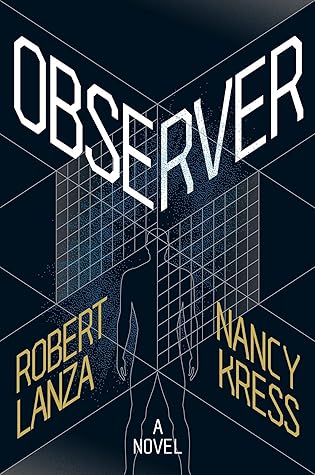More on this book
Community
Kindle Notes & Highlights
‘Quantum foam’ refers to the basic ‘stuff’ in the universe, the stuff that exists before you even get to basic particles such as electrons. ‘Superposition’ means that the quantum foam is not matter, nor energy, but just the potential of becoming either. It is, basically, just a cloud of probabilities.
Probabilities turn into matter or energy only when they are observed. That is called ‘collapsing the wave.’ In other words, it is the observer who actually creates what we call reality.”
“Everything we just said, and more, adds up to a radical departure in the way we conceive of reality. It’s just as Berkeley implied in the 1600s, although he did not say it directly: nothing exists until we observe it. Nothing.”
saying—that all possible tables can exist until someone makes an observation. A fuzzy cloud of superimposed quantum information is what exists, which could become all possible tables. Then Caroline Soames-Watkins, preceded by a lot of others, enters the room and observes, and lo! There is a table.”
Life as we know it is observer-determined, which seems to trap us in the universe we’re familiar with. But change the algorithms and you can create a different ‘reality.’
“Think of it this way: a single conscious observer can completely define the quantum blur, leading to a collapse of its waves of probability into a new branch of the universe.
that the universe I’m about to enter is real, and my consciousness created it.”
not only is the material world the result of consciousness instead of the other way around, but that time is too. That the past only exists because our consciousness creates it now, in the ways dictated by the algorithms in our brains.
‘Time Is Nature’s Way to Keep Everything
From Happening At Once. Space Is Nature’s Way To Keep It From Happening To Me.’”
Experiments also show that when scientists watch a particle pass through two slits in a barrier, the particle behaves like a bullet and goes through one hole or the other. However, if you do not watch, it acts like a wave and can go through both holes at the same time. But how can a particle ‘out there’ change its behavior depending on whether you watch it or not? Only if ‘reality’ is a process that involves our consciousness.
consciousness does not simply observe the universe. We create it, and
we do so not just singly but collectively. And as scientists explore this new line of research, it’s becoming increasingly clear how intimately we are all connected with the structure of the universe on every level. Including connections with each other.”
said, ‘There are two ways to be fooled. One is to believe what isn’t true; the other is to refuse to believe what is true.’
Time isn’t a feature of the external world; it’s a projection of something within our minds as we tie together things we’re observing.”
Time as we conceive of it is change, and only observers can experience change. Without observers, there is not even any reality to begin with.
Quantum mechanical trajectories ‘future to past’ are associated with erasing memory, since any process that decreases entropy—any
leads to the decrease of entanglement between our memories and observed events. In other words, if we were to experience the future, we wouldn’t be able to store the memories—you can’t go back in time without that information being erased from your brain.
By contrast, if you experience the past, the usual route of ‘past leads to present leads to future,’ then you accumulate mem...
This highlight has been truncated due to consecutive passage length restrictions.
That superposition is why Einstein said ‘the distinction between past, present and future is only a stubbornly persistent illusion.’”
Consciousness creates the past, not the other way around. Which, incidentally, was what Stephen Hawkings said, too: ‘The past, like the future, is indefinite and exists only as a spectrum of possibilities.’”
Consciousness could not be ended by bodily death because consciousness created reality, and since time itself didn’t exist outside of consciousness, there was no “after death” except of the death of someone else’s physical body in another person’s now.
“Schopenhauer: ‘All truth passes through three stages. First, it is ridiculed. Second, it’s violently opposed. Third, it is accepted as being self-evident.’”
“Know in thyself and All one self-same soul;
“Banish the dream that sunders part from whole.”


